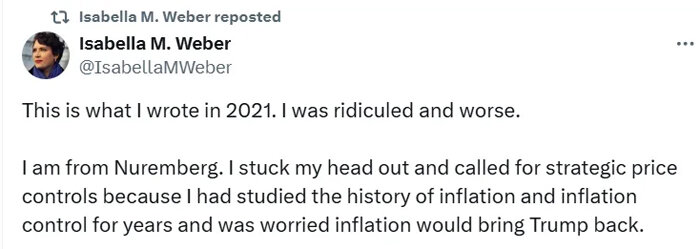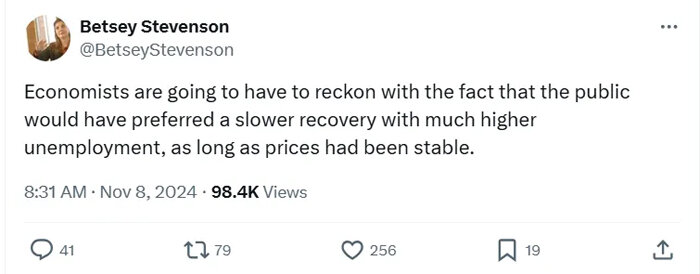Democrat economist Betsey Stevenson thinks that the unfortunate takeaway of Harris’s defeat is that voters dislike inflation more than elevated unemployment.
The economic model she has in mind here is a sort of simple Phillips curve: that, in the short-term at least, all that macroeconomic stimulus drove high demand which delivered both high employment and above-target inflation. That this was so politically unpopular shows that voters would have preferred less fiscal and monetary stimulus, higher unemployment and more stable prices, no?
I agree with her that given that everyone is affected directly by inflation, policymakers underestimated its unpopularity. But Stevenson overreaches with a faulty model determining her conclusion. Tight labor markets don’t “cause” inflation. Unemployment does not cure it. Both tight labor markets and inflation can be shared consequences of excessive spending driven by too much stimulus, but one needn’t imply the other.
The very fact that there has been less fiscal and monetary economic stimulus in recent years and that spending growth has fallen without a big spike of unemployment as inflation has tumbled, shows that, provided the slower growth of total spending is anticipated, there’s no reason why less stimulus need cause mass unemployment. In other words, there’s an alternative world where there was far less monetary and fiscal stimulus in the latter stages of the pandemic, the economy recovered and unemployment remained pretty low, but we simply saw lower inflation.
It will be hard to accept this lesson. The mythology built up by Democrats since the financial crisis is that pushing the demand accelerator is a necessary precondition of good macroeconomic outcomes. But we’ve just run the experiment in both directions over four years! It’s time to update some priors.



